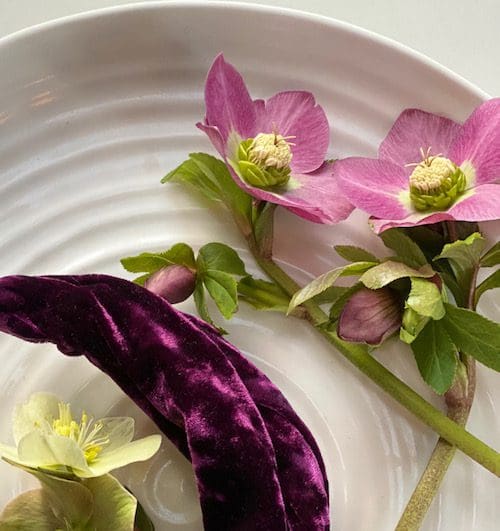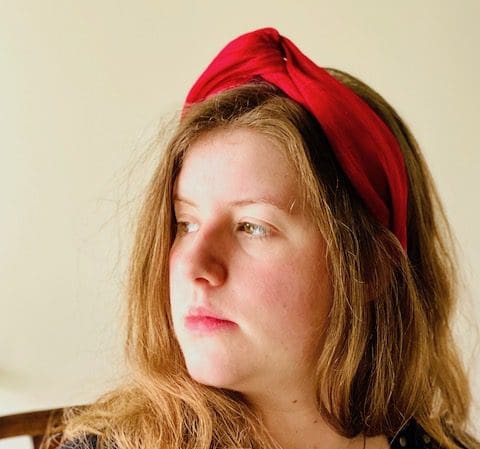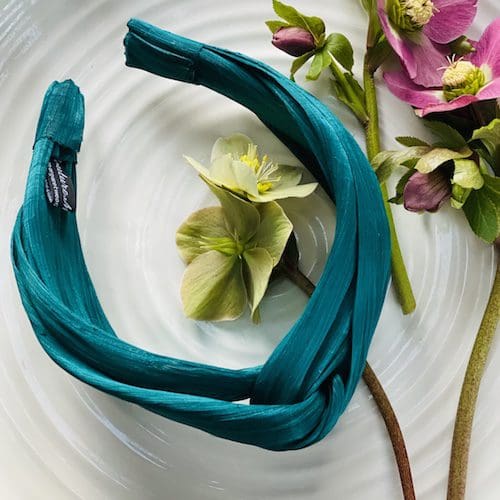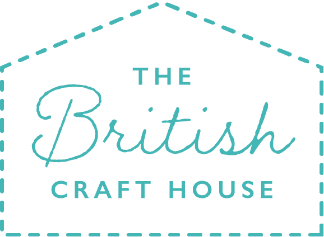
Living and working in rural North Northumberland just three miles from the sea, I find nature and the environment a great source of inspiration – especially the colours, patterns, and textures of our natural surroundings, not to mention the big skies we have up here! So I thought I would write about the relevance of nature and how both nature and creativity are interdependent for me when finding a direction in my work.
We live close to the coast with its wonderful North Sea beaches and here I find I am inspired by the patterns created by seaweed on the beach, the swirling patterns formed by the ocean against the rocks on our beautiful shores and so on. Further inland the many sources of inspiration are varied – be it the inspiring sometimes glowering Cheviot, ever present in our weather system of course, the rolling heather moorland that inspired my claret velvet turband; then there are our picture perfect castles and market towns many with their ancient borderland history. Finally of course when the call of the city comes there is the ease of access to some brilliant city museums in the relative proximity of both Newcastle and Edinburgh. At all points, I revel in finding creative inspiration around me with texture, pattern, degrees of light and colour being the most significant factors. In fact, the Cheviot also inspired the black and white check Border Shepherd plaid tartan, referenced in my shop logo and header.
I am delighted now to have the opportunity to showcase my first accessory collection for my British Craft House shop, mhw_millinery. The essence of the collection is that a turband is a contemporary and fashionable accessory, you can wear it as a smart stylish hairband for casual occasions or for slightly more formal occasions as a dressy headpiece – essentially it is the younger and trendier sister of a turban.

When designing my turband flat lay shots I looked no further than our own springtime garden for my props and plucked some blooms from one of our hellebores orientalis, using these to as a foil for my turband collections. Continuing the organic theme I also liked the ammonite style Sophie Conran cake stand – a lovely Christmas present from a certain person in our house – so I used these two elements as a foil to my accessories collection when creating my home-styled flat lays. That and my new phone of course!
So here’s a couple featuring flat lays using those features. What do you think? Both feature the lovely silk abaca fabric – a specialist millinery fabric that is a mixture of silk and fibre from the abaca tree, a member of the banana species.


Silk abaca lends itself to being dyed as well as having finishes such as appliques and beading applied. I’m just working on my next TBCH turband collection and am excited to announce that I will be showcasing more couture design options including vintage beading and applique.
